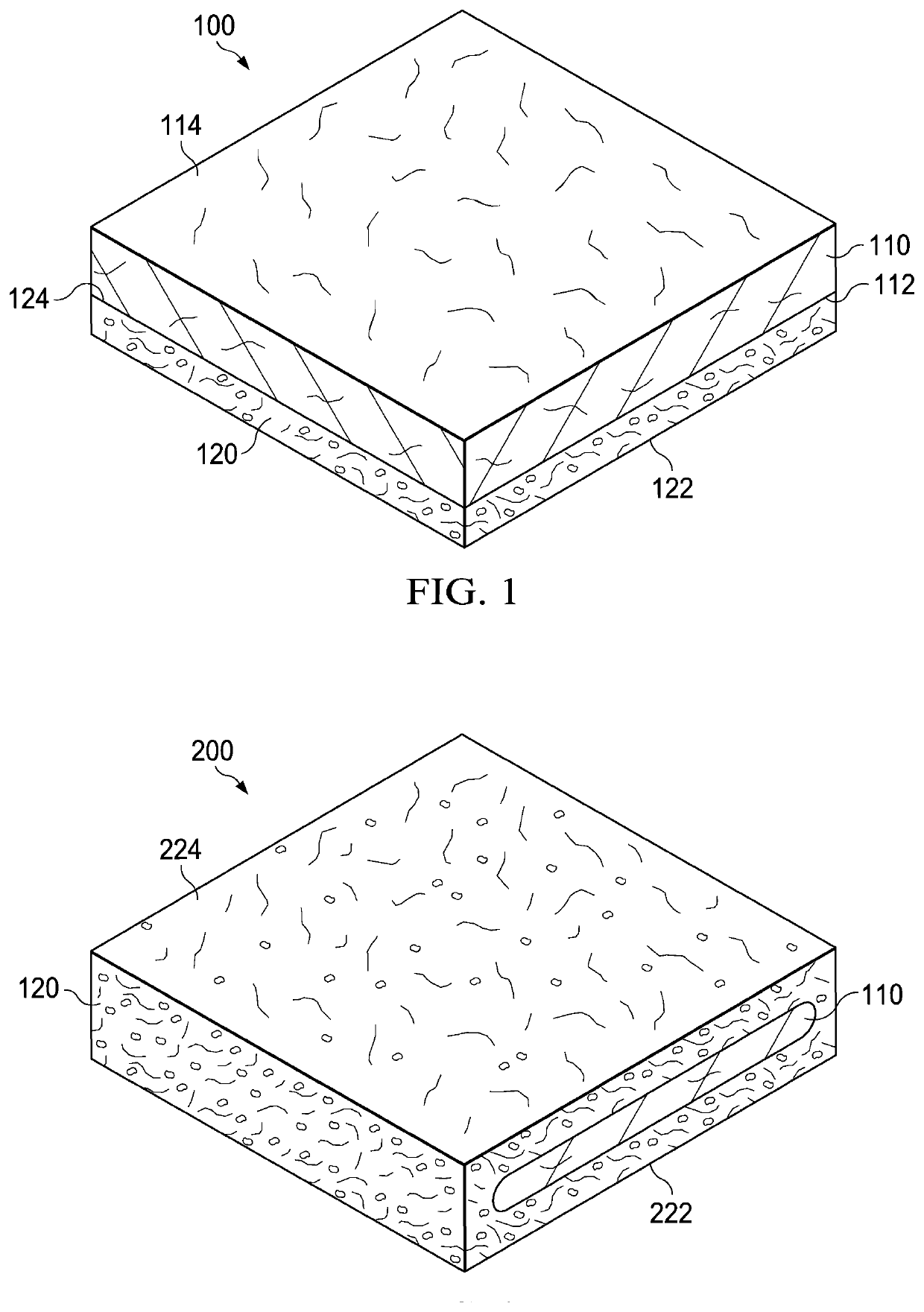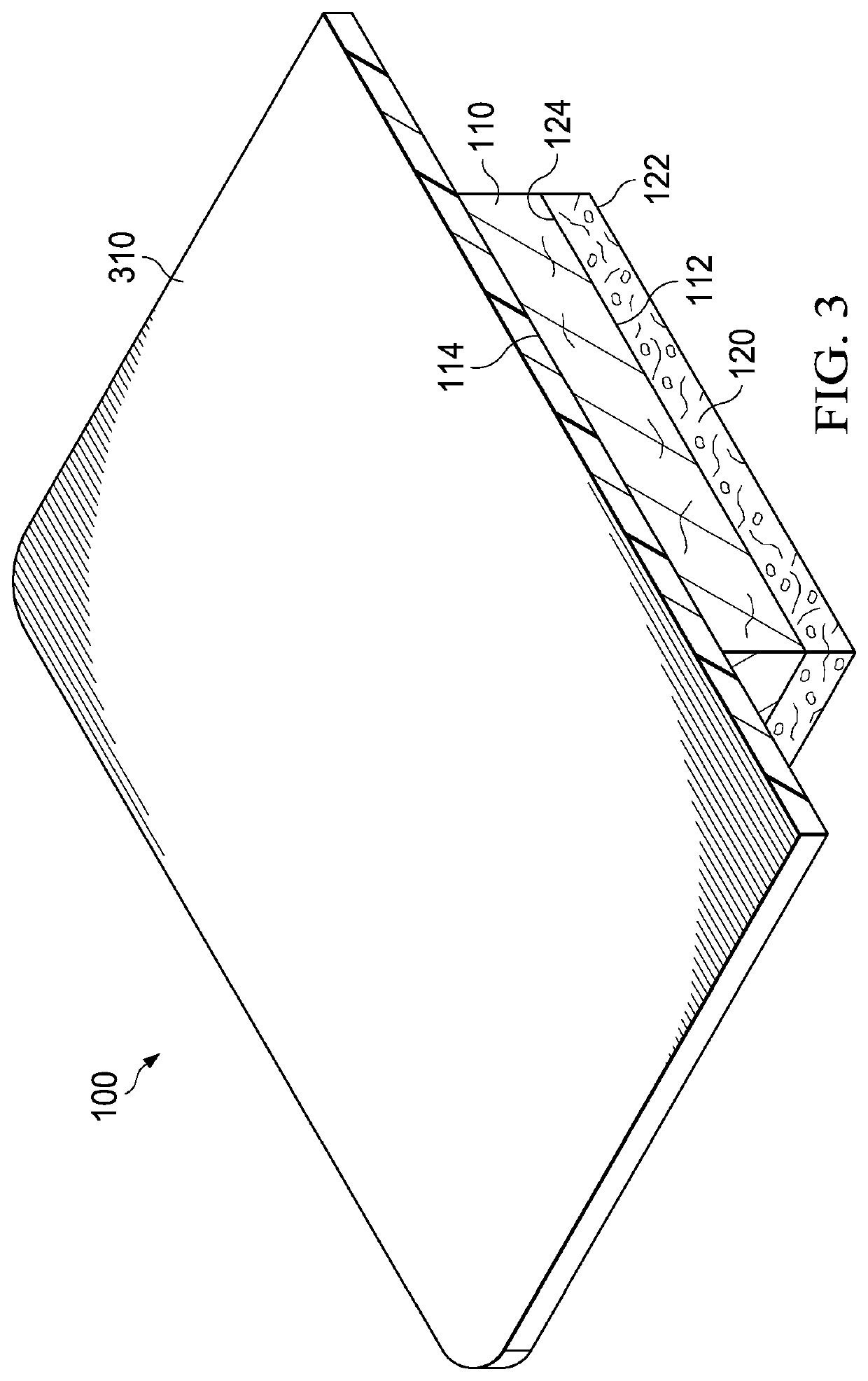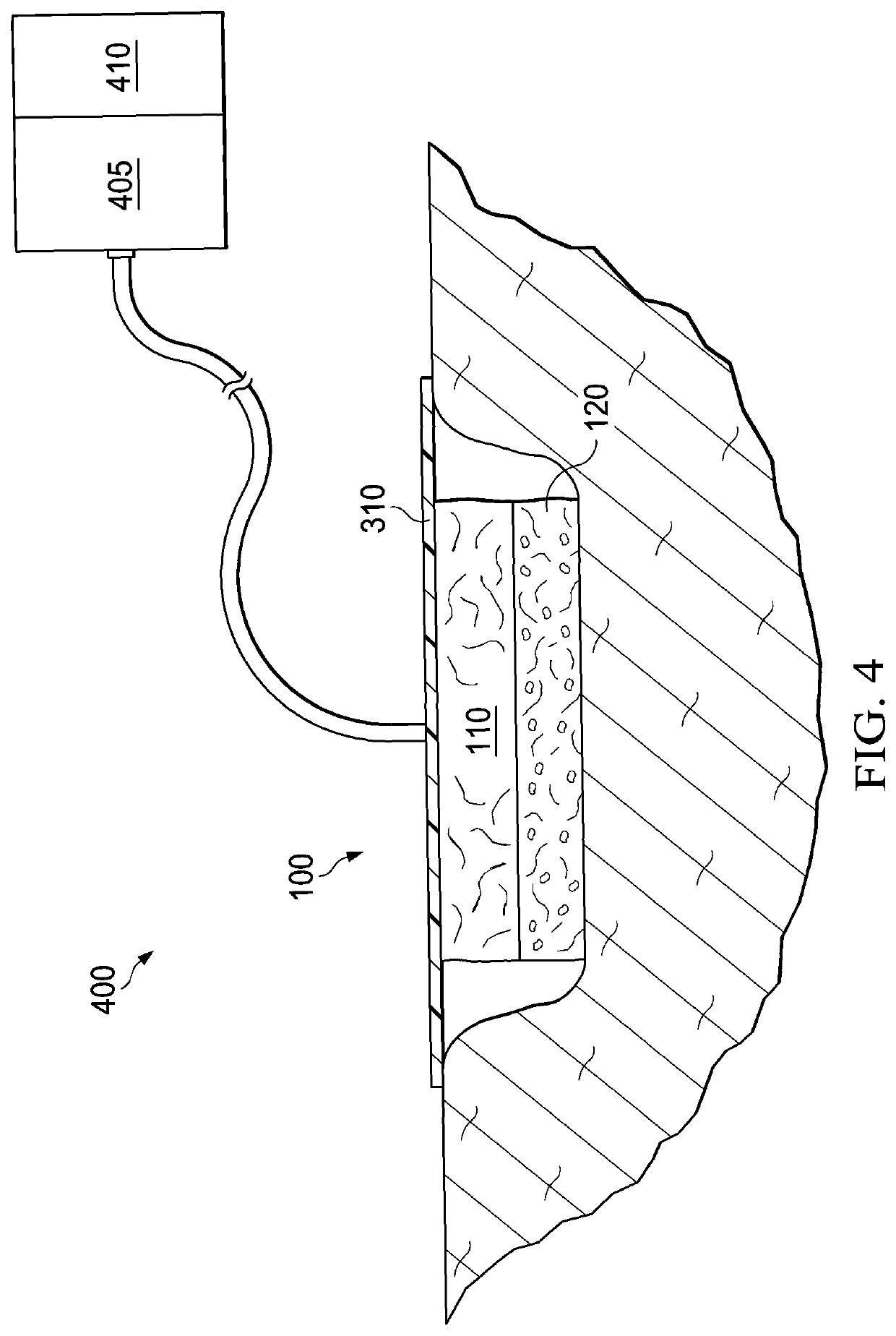Dressing including dehydrated placental tissue for wound healing
a placental tissue and dressing technology, applied in the field of tissue treatment, can solve the problems of tissue loss, systemic infection, tissue damage, and death, and achieve the effects of reducing the risk of infection
- Summary
- Abstract
- Description
- Claims
- Application Information
AI Technical Summary
Benefits of technology
Problems solved by technology
Method used
Image
Examples
example 1
Collagen / ORC Sponge
[0153]In a first example, a dressing including a DHAM and a collagen / ORC sponge was prepared. In the first example, an initial slurry was generated through the swelling of collagen in 0.05M acetic acid solution. Once the collagen was sufficiently swelled, powdered ORC was blended into the collagen slurry. The resulting slurry mixture had a solids content of about 1%, with collagen and ORC present at a ratio of 55%:45%, respectively. The slurry mixture was then decanted into a suitable tray at which point a sheet of DHAM was applied directly to the surface of the slurry mixture. This was then immediately transferred to a −70° C. freezer. Once frozen, the block was freeze-dried, producing a single dressing with two distinct layers: a DHAM layer and a collagen / ORC sponge layer.
example 2
Collagen / ORC Film
[0154]In a second example, a dressing including a DHAM and a collagen / ORC film was prepared. In the second example, an initial slurry material was generated through the swelling of collagen in 0.05M acetic acid solution. Once the collagen was sufficiently swelled, powdered ORC was blended into the collagen slurry. The resulting slurry mixture had a solids content of about 1%, with collagen and ORC present at a ratio of 55%:45%, respectively. Further to the collagen and ORC, glycerol (300 μl glycerol per 100 ml collagen / ORC slurry) was added as a plasticizer. The resulting slurry mixture was then decanted into a suitable container and degassed in a vacuum. Once degassed, the slurry mixture was poured into a suitable tray (˜31 g of slurry per 10×10 cm) and a sheet of DHAM applied directly to the surface of the slurry. This was dehydrated for about 24 hours at 37° C. The resulting dehydration produced a single dressing with two distinct layers: a DHAM layer and a colla...
example 3
Collagen Synthesis Upon Application of the Dressings of the Present Technology
[0155]A collagen synthesis assay with dermal fibroblasts is performed. This is a standard assay which shows the amount of collagen synthesized by fibroblasts after stimulation with the active agents in the dressings of the present technology. Briefly, 8.4×104 human fibroblasts (per well) are plated into 24-well plates, and then incubated at 37° C., 5% CO2, in 10% FBS-DMEM. Once the cells are confluent (within 24 hours of plating), the 10% FBS-DMEM is removed, and the cells are washed 3× with serum-free DMEM (SF-DMEM), before the test dressing samples of the present technology or a collagen / ORC alone dressing is added to the cells. Cells are then incubated for 72 hours after which time the media is collected and analyzed for the levels of the C-terminal propeptide of Type-1 Collagen (CICP) present in the cell culture media. The level of CICP in the media, which is released by the fibroblasts: as a by-produc...
PUM
| Property | Measurement | Unit |
|---|---|---|
| pH | aaaaa | aaaaa |
| lengths | aaaaa | aaaaa |
| lengths | aaaaa | aaaaa |
Abstract
Description
Claims
Application Information
 Login to View More
Login to View More - R&D
- Intellectual Property
- Life Sciences
- Materials
- Tech Scout
- Unparalleled Data Quality
- Higher Quality Content
- 60% Fewer Hallucinations
Browse by: Latest US Patents, China's latest patents, Technical Efficacy Thesaurus, Application Domain, Technology Topic, Popular Technical Reports.
© 2025 PatSnap. All rights reserved.Legal|Privacy policy|Modern Slavery Act Transparency Statement|Sitemap|About US| Contact US: help@patsnap.com



